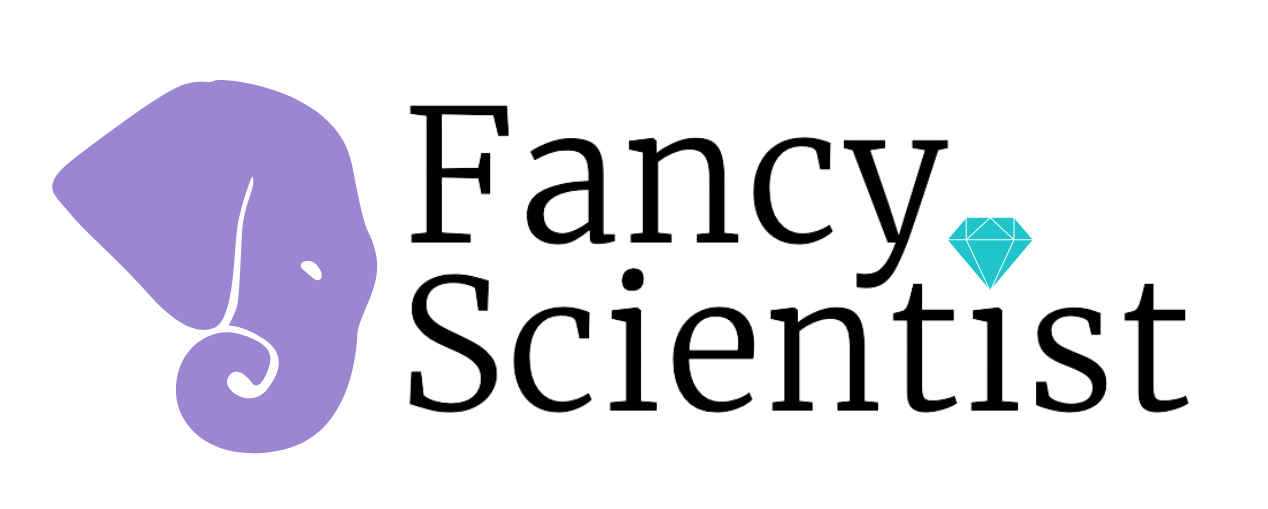*This post contains affiliate links. As an Amazon Associate, I earn from qualifying purchases. This means when you make a purchase, I get a commission at no cost to you! Read more about my affiliates on my Affiliate Links Disclaimer.
If you ever visit Borneo, one of the things you have to do is see a proboscis monkey in the wild. These monkeys are famous for their crazy big noses that some call ugly, but I (and other monkeys) find endearing.
I know of proboscis monkeys from superb BBC nature documentaries. The proboscis monkey is an endangered species. Usually when you go on safari (either on water or land), an endangered species is incredibly hard to see.
But I got to see these monkeys when I went to Borneo and it was such a magical experience! And the best part was that it wasn’t hard at all. Here’s my experience along with fun facts about this Pinocchio primate.
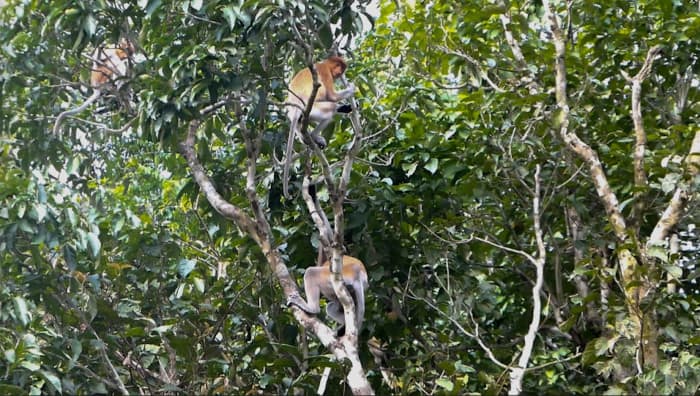
Where to See Proboscis Monkeys: Kinabatangan River River Safari
To see these monkeys, you can take a real life Disney Jungle Cruise on the Kinabatangan River to search for them. You don’t have to search hard though; it is guaranteed you will see the proboscis monkey.
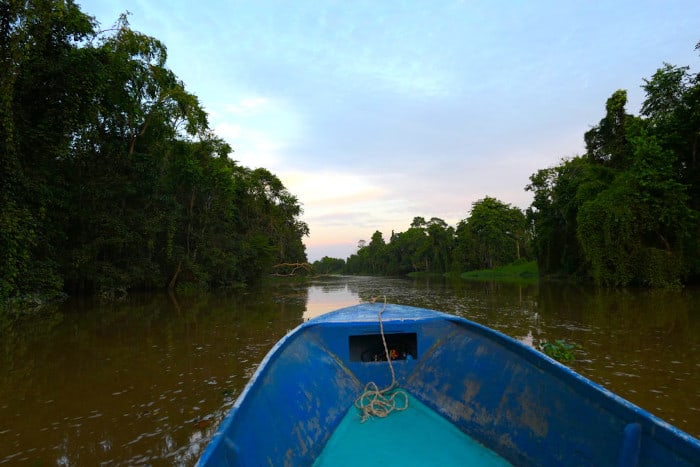
I actually asked our guide, what is the chance we will see the proboscis monkey? I had been searching for orangutans for a week with no luck. One of them said 100%. I couldn’t believe this when I found out. Guides never guarantee you will see wild animals because you can’t control where they are.
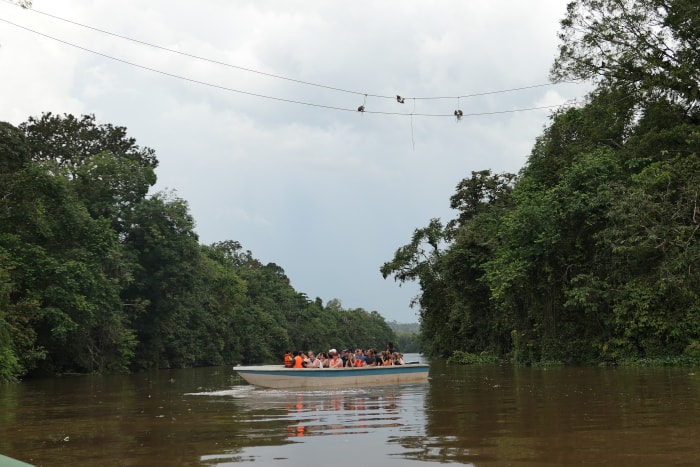
We put our life vests on and headed out in the boat to search for monkeys. And boy did we see monkeys! The monkeys were so freaking easy to see.
What Eats a Proboscis Monkey?
The monkeys are so easy to see because of the answer to this question. The river cruises occur during the mornings and evenings, the best time to see the monkeys. During the day, the monkeys forage away from the river, but each night they come close to the shore and roost (a fancy word for sleep) in a tree.
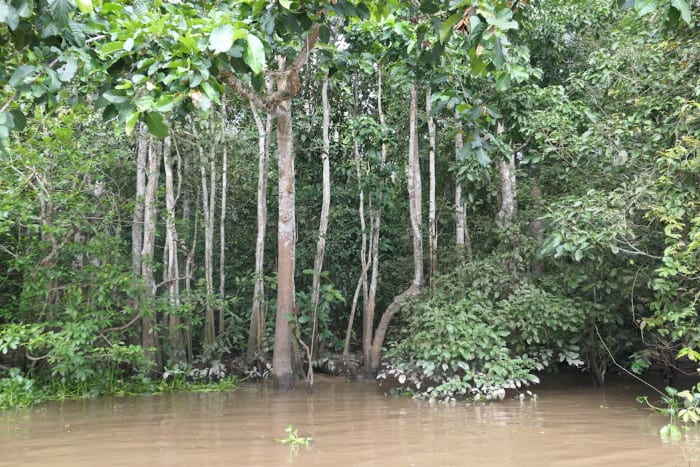
Because the monkeys come so close to the river, it is SO EASY to see them. Unbelievably easy!
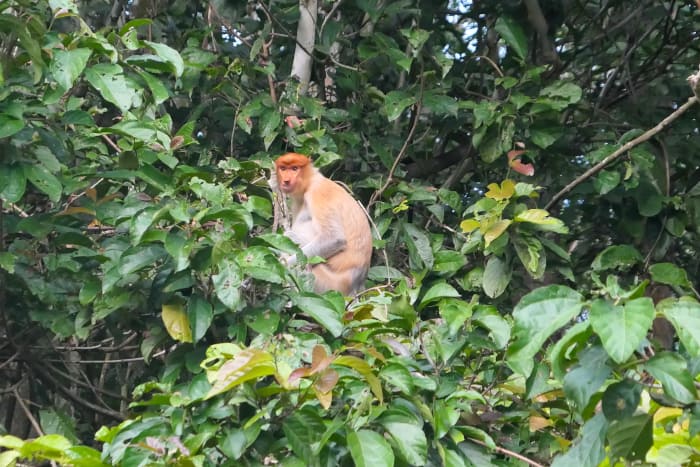
But why do they come to the river? To help them escape from predators. The monkeys will jump into the river to escape one of their biggest predators, the clouded leopard. Unlike most monkeys though, they do well in the water. They have partly webbed feet and can swim up to 20 m (~60 ft) underwater!
One study found that when the forest floors were flooded, the monkeys actually stayed inland at night. The clouded leopards can’t walk well (or at all) through the flooded waters covering the forest floor so the monkeys didn’t have to travel to roost.
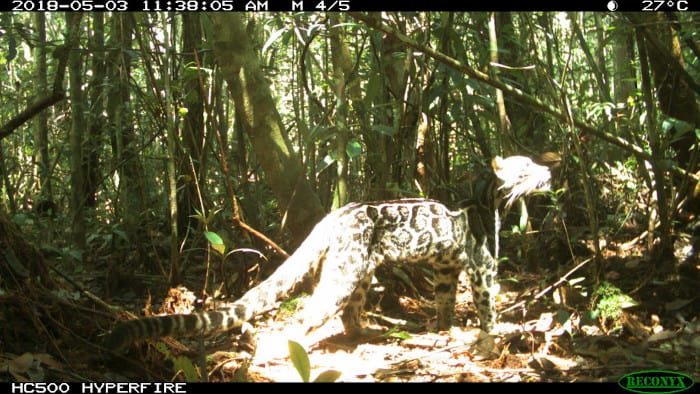
Jumping into the river doesn’t escape all predators though and in fact they are jumping into the home of another predator – crocodiles. The tomistoma (false gharial) and saltwater crocodiles (where there is brackish waters) both prey upon proboscis monkeys.
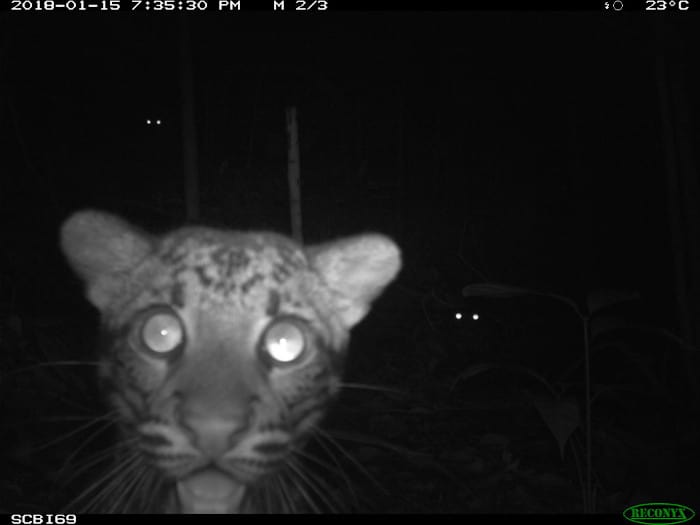
Other potential predators include monitor lizards, pythons, and crested serpent eagles.
Why is the Proboscis Monkey Important?
The proboscis monkey is important for the ecology of Borneo island because they are seed dispersers. They eat leaves, but also fruit. The fruit seeds are not digested, but pooped out which helps the plant germinate. Plants can therefore be dispersed much larger distances when they are carried by monkeys. Some seeds in this area are dispersed only by monkeys.
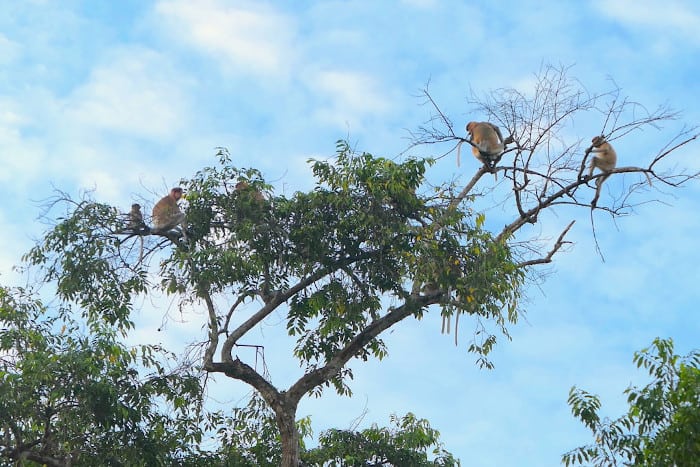
These monkeys are also important because as mentioned before, they are endangered, but they are also endemic. Endemic means that they are found no where else in the world! Borneo is the only place you can find proboscis monkeys. If something bad were to happen to Borneo and all of the populations were to be wiped out, this species would go extinct.
How Many Proboscis Monkeys are Left in the World?
In Mammals of Borneo, Phillips and Phillips report that there are approximately 20,700 individuals left across the island of Borneo.
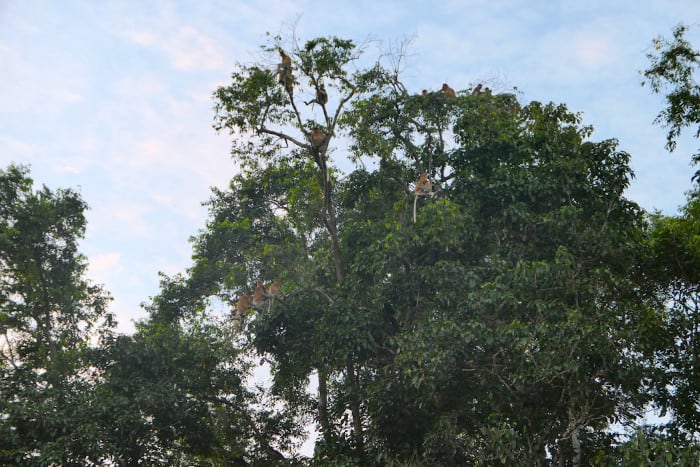
The proboscis monkey is most threatened by development. They live near riverine and coastal habitat, which has undergone a lot of habitat destruction because it is preferred by humans for logging, cultivation, and settlement.
It’s also a pretty easy species to hunt. They are targeted for bezoar stones for their use in traditional Chinese medicine.

Why Does the Proboscis Monkey have a Big Nose?
This is the most fun part about the proboscis monkey. The word proboscis means nose and these monkeys sure do have big ones, especially the adult males.
The nose of the proboscis monkey evolved because of sexual selection. It is a true signal of a male’s body and testis size and there is a correlation between nose size and the number of females a male has. Let me explain how this all works.
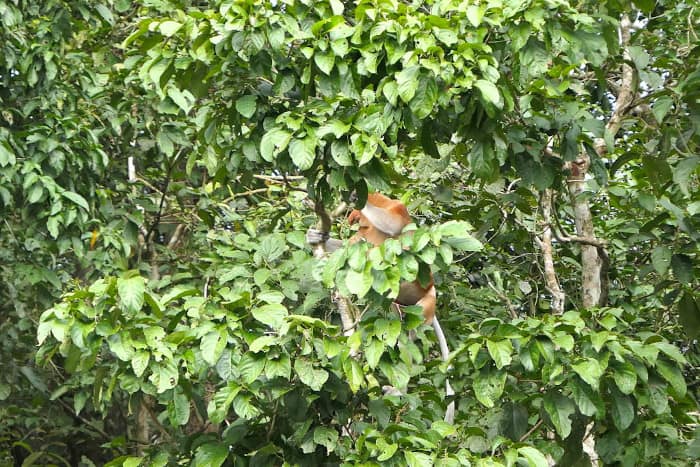
When males are sexually mature, they compete to have access to a harem of females that they can then reproduce with. To win over such a harem, they often have to defeat the existing male. This means they need to be big and strong. Once they get the harem, they have to continue to defend it against other males who might challenge it.
Because the size of a male is correlated with the size of it’s nose, the biggest males are more likely to win and have larger harems, and therefore pass on their genes more. This means there will be more big-nosed individuals in the population.
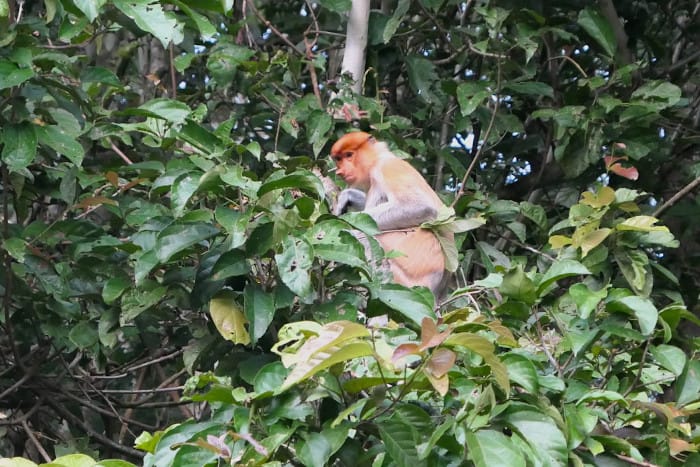
The big nose can act as sort of a warning to other males who want to challenge. Much like large antlers in deer or big tusks on elephants, individuals can size up their potential competitors based on these features and decide if they want to risk their lives (quite literally) to win over the harem.
The nose also signals to the females that the male is a catch. The alpha male is thought to play a large role in defending the harem against predators. Being in a harem with a large-nosed male means that you may have better chances of surviving and females will be more attracted to them.
Finally, the large nose is used in vocal communication. It amplifies the calls males give which can help in survival (through warning calls) and in mate attraction.
Why Do Proboscis Monkeys Have Big Bellies?
Are proboscis monkeys just fat?
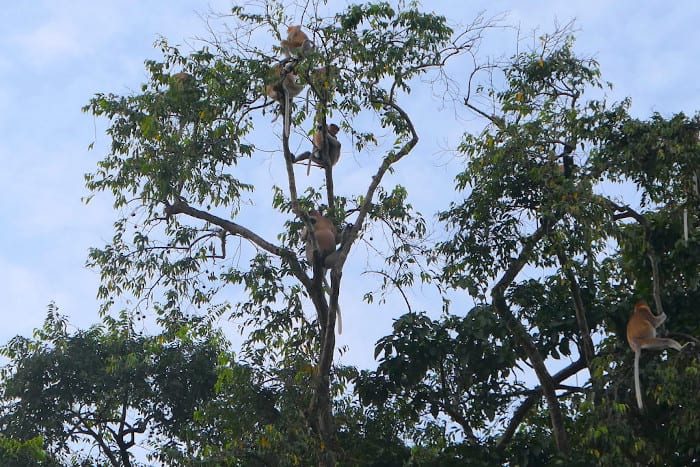
Another fun feature of the proboscis monkey is that they are the only primate to chew cud (like a cow). This means the leaves that they eat go to their stomach, digest a little and then come back up to be re-chewed.
They even have a four-chambered stomach, again, like a cow or other ungulates. These monkeys eat a lot of leaves and this anatomy helps them digest the toxins (in the form of chemical defenses from the plants) that they accumulate.
If you ever get a chance to visit Borneo, seeing these monkeys is a true treat. Because they come close to the shore, you can see them extremely well. The only thing that made me sad about this experience was the drone of the motor from the boats and the associated pollution. I couldn’t help but wonder if the monkeys hated the noise too. But if it wasn’t for the tourism that these monkeys bring in, the species might be even more endangered or extinct.
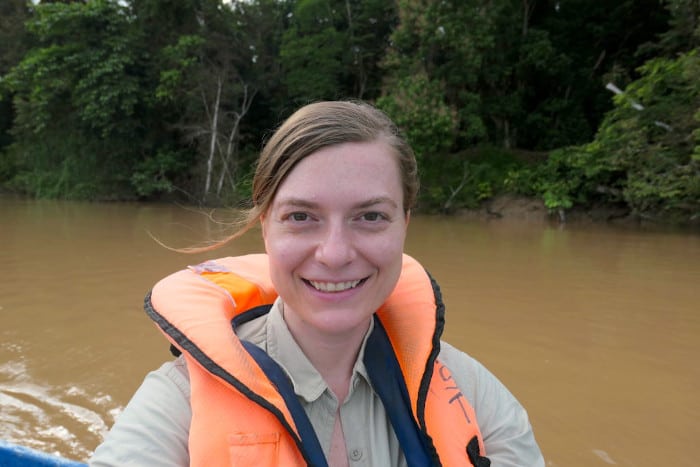
Headed to Borneo? Make sure you get the Phillips and Phillips Field Guide.
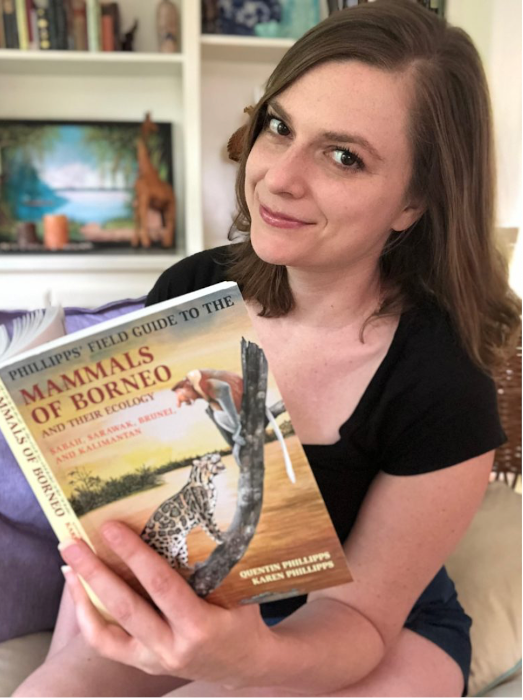
Love this post? Share it with friends!
